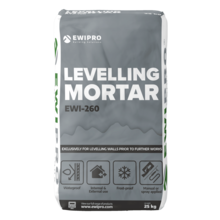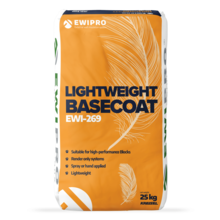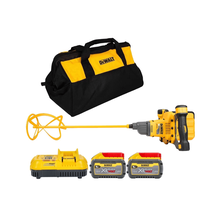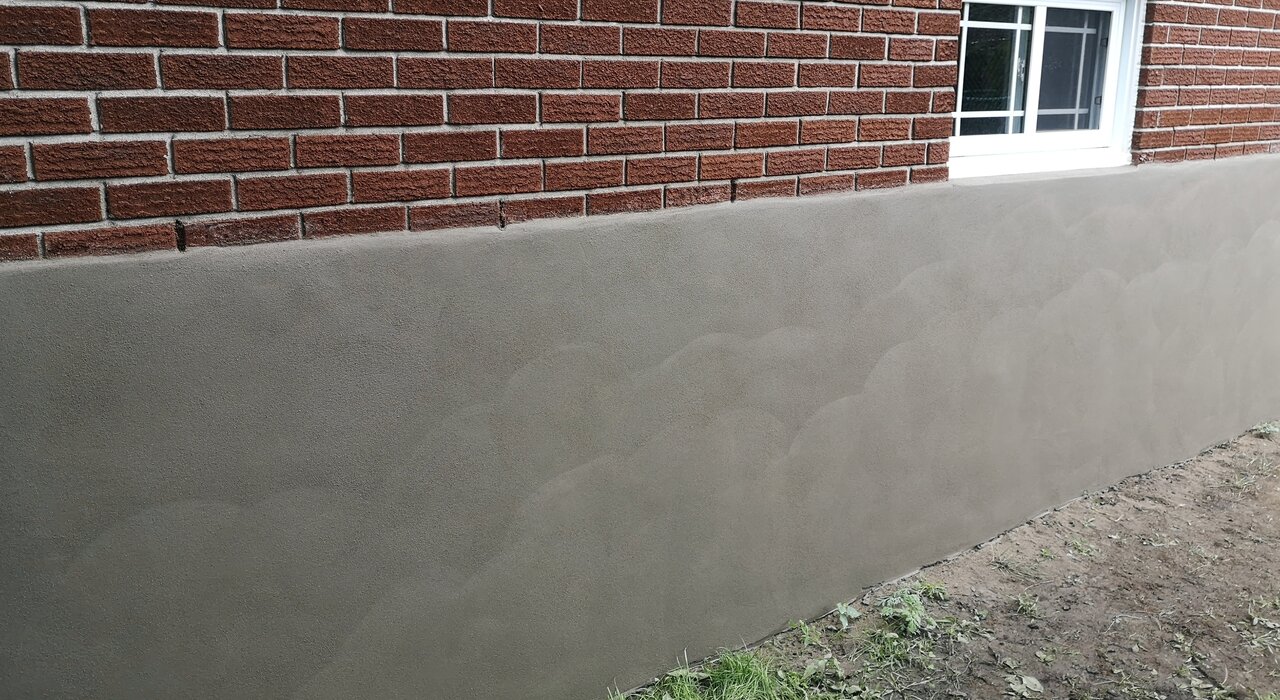
When undertaking masonry or rendering work, you come across many preparation layers, one of the most useful being the parge coat. Though less talked about than render or plaster, parge coats play a vital role in smoothing surfaces, protecting walls and ensuring the success of render-only systems.
What Is a Parge Coat?
A parge coat is a thin layer of mortar applied directly to masonry surfaces, such as brick, blockwork or concrete, to create a smooth, uniform background. The process, known as parging, helps address imperfections, regulate suction and provide a better key for subsequent finishes like render or paint.
Typically made from sand, cement and water, parge coats may also include additives for enhanced adhesion, flexibility or water resistance. They’re essential in both retrofit and new-build scenarios.
Where Are Parge Coats Used?
Parge coats are highly versatile and are used across various building types and project needs. Here's a breakdown of their most common applications:
Basement Walls (Interior and Exterior)
Basements are vulnerable to moisture ingress, especially in older buildings where concrete blocks or poured walls are porous. A parge coat here:
-
Seals the surface to reduce water penetration
-
Creates a clean, uniform finish before tanking or painting
-
Can be used as part of a broader damp-proofing strategy
Exterior Masonry Walls
Uneven or unattractive blockwork exteriors can benefit significantly from parging. On these surfaces, a parge coat:
-
Conceals joints, blemishes and cracks
-
Evens out surface suction across mixed substrates
-
Prepares the wall for render-only systems or breathable paint
Foundation Walls (Above-Ground Section)
The visible part of the foundation can suffer from splashback damage, algae, or frost wear. Parging:
-
Adds weather protection
-
Improves appearance and consistency with the rest of the façade
-
Can be painted or rendered for a complete finish
Cavity Wall Refurbishment & Infill Panels
In retrofit projects, infill panels (often concrete blocks within timber or steel frames) may sit unevenly. A parge coat helps by:
-
Blending different surface materials
-
Creating a flat background for rendering
-
Enhancing overall visual consistency
Commercial and Agricultural Units
Concrete or blockwork buildings, like warehouses and barns, often have exposed interiors or façades. Parging in these cases:
-
Seals gaps and improves airtightness
-
Helps regulate interior temperatures
-
Offers a tidy finish for public-facing walls
Heritage and Solid-Wall Properties
Older buildings often feature brick or stonework that’s deteriorated or uneven. Breathable parge coats:
-
Smooth and protect ageing substrates
-
Provide a base layer for lime or silicone renders
-
Retain breathability while improving appearance
Render-Only System Preparation
For render-only projects, where no insulation is installed, parge coats are often necessary. They:
-
Smooth minor imperfections
-
Regulate suction
-
Ensure adhesion of topcoat renders like Silicone Render or Acrylic Render
Product Choice: EWI-260 vs EWI-269
EWI-260 Levelling Mortar
Best suited for heavily uneven surfaces or areas needing substantial build-up (up to 50mm). Ideal for:
-
Refurbishment and repair
-
Pre-insulation levelling
-
Very rough brick/block substrates
EWI-269 Lightweight Basecoat (Render-Only Projects)
Perfect for relatively flat surfaces where render is being applied directly to masonry. Benefits include:
-
Lightweight, easy-to-trowel formula
-
Excellent coverage for small imperfections
-
Fully breathable and highly adhesive
-
Compatible with thin coat render systems
Use EWI-269 only when the wall is mostly flat, it's not a replacement for levelling mortar on uneven walls.
Application Process
1. Surface Preparation
-
Clean substrate thoroughly (dust, oils, loose material)
-
Fill major cracks or voids
-
Dampen slightly to reduce suction and improve adhesion
2. Mixing
-
Follow product-specific instructions
-
Mix with clean water using a paddle mixer
-
Machine application is possible with systems like Euromair MixPro 28
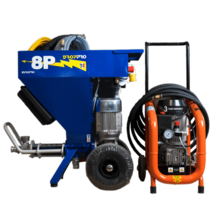
3. Applying the Parge Coat
-
Apply at an appropriate thickness:
-
EWI-260 up to 50mm
-
EWI-269 up to 5-20mm in one pass
-
-
Use a stainless-steel trowel or spray machine
-
Work product firmly into the substrate
4. Finishing
-
Smooth using a float or sponge float, depending on the finish
-
Can be keyed for an additional render grip
-
Allow to cure for 24–48 hours before rendering
5. Curing
-
Protect from rain, frost and direct sun
-
Mist with water if drying too quickly
Frequently Asked Questions
Can you paint over a parge coat?
Yes, but only once fully cured. Use breathable finishes like Silicone Paint or Render to avoid trapping moisture.
Will a parge coat fix structural damage?
No. It’s suitable only for cosmetic and surface-level repairs. Significant damage needs structural assessment.
Is parging the same as rendering?
No, parging is a preparation layer, while render is a decorative and protective finish.
How long will a parge coat last?
Properly applied, a parge coat can last 20–30 years, especially when protected with paint or render.
Final Thoughts
A parge coat may be a simple layer, but it lays the groundwork for the entire external finish. Whether you're preparing for render, tidying up exposed masonry or upgrading old walls, choosing the right parge coat - EWI-260 Levelling Mortar for rough surfaces or EWI-269 Lightweight Basecoat for flatter substrates, ensures a long-lasting, professional result.
Explore our full range of levelling mortars, basecoats, and topcoat finishes at EWI Store to find the right system for your next project.

